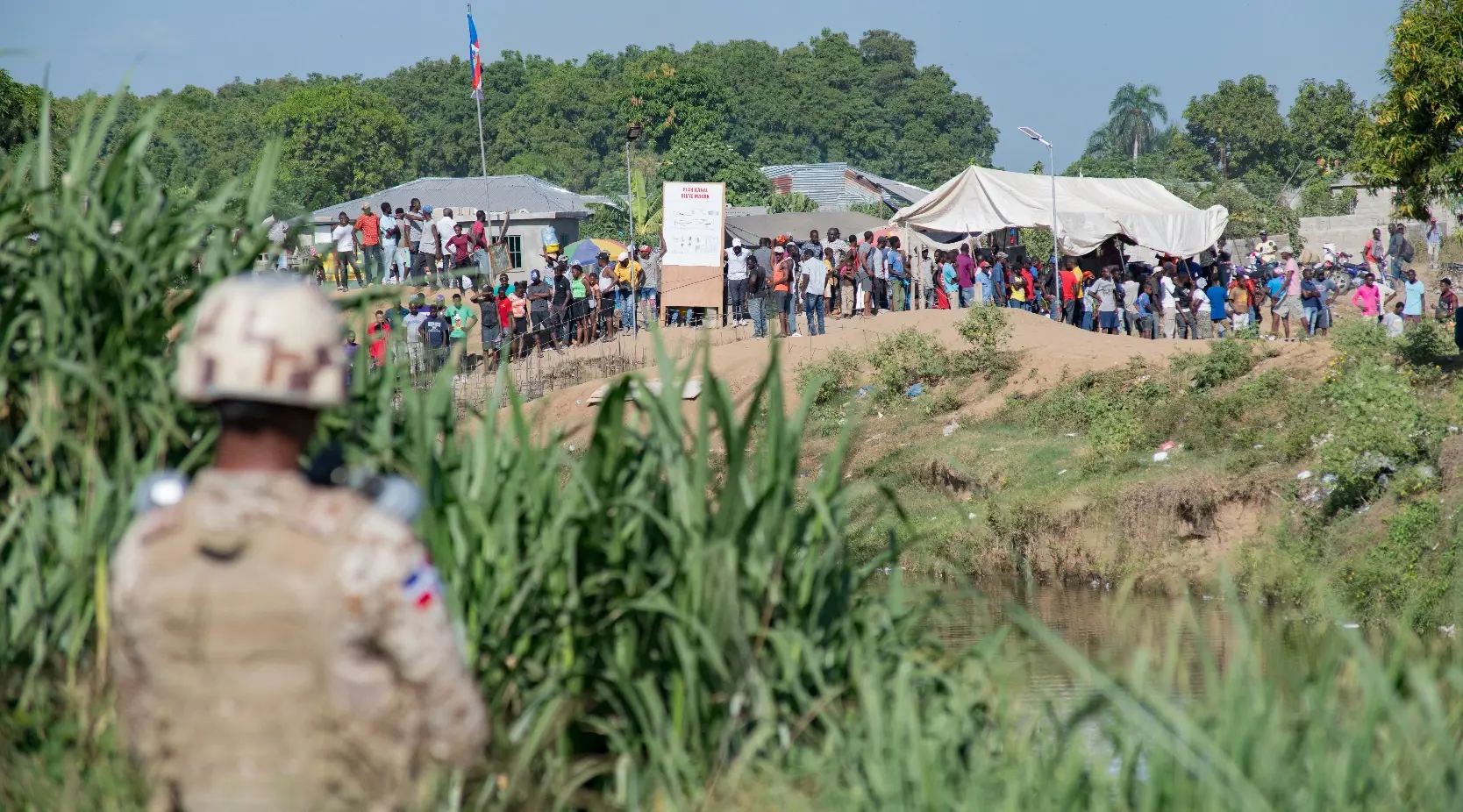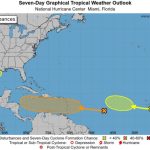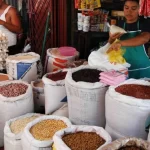Dominican Republic and Haiti in a conflict aggravated by inequalities

Distant in degrees of development and the practice of democratic practices, the two nations of the island of Hispaniola have been locked in discord over an irrigation canal illegally connected to the Masacre River in collective desperation for water, a symbolic representation of the century-old thirst for justice that vandalism and ungovernability intensify against Haitians at the very edge of the country that suffers the consequences of its alarming backwardness in the social order.
A deep-rooted cross-border subordination with goods, services, and jobs provided by Dominicans to the poor neighbor is facing its worst threat.
The muscular ephebe who at the beginning of the week destroyed with Mandarin a pyramid of territorial delimitation near Dajabón, was driven by the closing of the border and its logistical consequences against impoverished inhabitants and by the revanchism and illegitimacy of his derisory government, which agrees with elites who maintain the Haitian State in a failed condition.
A geographical area in inferiority to the adjacent Dominican Republic, which registers a GDP five times greater than that of the Western territory, “halted in its collective progress by a greater political and macroeconomic instability and a lower investment in infrastructure and human capital with deterioration of the environment” (World Bank data).
The International Development Association, sponsored by the WB above, highlighted how fruitless the critical historical and cultural similarities of both countries, which share everyday historical experiences including colonial origins, US occupation, and former autocratic regimes, such as those of Trujillo and Francoise Duvalier, from which only the Dominican Republic resurfaced as a young and promising democracy, have been. In 1960, both had the same GDP per capita. Today, a gulf separates the percentages.
Together and dissimilar
The ambivalent consequences, with a tendency to the worst, of the confinement of two contradictory societies on the same island were recently highlighted by the independent German magazine DW: “Although Haiti and the Dominican Republic share the same territory, they have developed very differently: while the Dominican Republic is one of the most popular (and successful) destinations in the Caribbean, Haiti is one of the poorest countries in the world.”
“In the Dominican Republic, there is a reasonable road network (and other important infrastructure) that allows travel without major problems from one place to another. In Haiti, however, it takes many hours to travel a few kilometers.”
The UN found that only 50% of the Haitian population can read and write, while 90% of their Dominican neighbors express themselves orally and in writing grammatically. The infant mortality rate in Haiti is almost three times higher than in the Dominican Republic. Without access to Dominican maternity services, the fate of Haitian newborns would be tragically unimaginable.
Accounts in disarray
Haiti’s Gross Domestic Product has had one of its worst enemies in the rampage of armed gangs. Its actions caused it to fall by 1.7% in 2021 concerning the previous year and last year, in one of the apogee of banditry and the failed condition of institutions, the Haitian GDP was 19,234,000 euros, with which its economy was number 118 in the ranking of the 196 countries subjected to macroeconomic measurements, far away from everything that occurs throughout Latin America. Its GDP per capita is around 430 dollars a year. That of the Dominicans will reach US$11,200 in 2023: the eastern island country is the seventh in the Americas with the highest GDP per person.
Haitian unemployment is frightening if one can believe that its measurement mechanisms can portray the reality of its citizens. Still, we are talking about more than 14% of the reduced active population, and its labor market is 90% informal. Still, generating goods and services is mathematically exiguous because it depends on primitive forms of achieving profits, and the volume of its interests is shamefully low. Haiti imports everything and destroys its forests for cooking.
On the other side of this legendary massacre of the foot crossings, the “Monthly Indicator of Economic Activity” of the Dominican Republic went from a level of US$8,583.1 in 2021 pre-pandemic, GDP per capita of US$10,732.9 in 2022 and is already approaching US$11,200 in 2023 with an encouraging inter-annual growth of 3.1%, the highest of the period. Year-on-year inflation in September was 4.41%, and liquidity provision measures through financial intermediaries contributed some RD126 billion for productive sectors and households. At least, the present and future look reassuring and promising, and stability keeps the country among the largest recipients of foreign direct investment in Latin America. Next to the powder keg that is Haiti, two-thirds of the rest of the island would seem to be an oasis.
Weaknesses and dangers
A very recent report by the Economic Commission for Latin America and the Caribbean, ECLAC, admits that the levels of poverty and inequality in the Dominican Republic have been significantly reduced in the last 30 years, although they remain high… but that is something being so close to the most unviable trading and other partner country, as almost the only source of profitable labor, of the most unviable countries in the region.
There are still critical structural gaps, defined as the different expressions of inequality, broad and persistent, which hinder the achievement of sustainable and inclusive development”, according to the diagnosis that adds: “The Dominican Republic presents some socioeconomic development indicators that are relatively behind the average of the countries of the region and many countries of the global sample.”
Based on these weaknesses and inadequacies pointed out by ECLAC, the crisis in Haiti tends to have repercussions with many risks for the DR. It is the country of destination of the second largest flow of Dominican exports, a trade conquest against which powerful domestic interests are turning, almost with hatred, to fight against the island’s interdependence. An acute shortage of Haitian labor, a pillar of national construction and agriculture, is foreshadowed, derived from the fury against the Dominican Republic carried to the red hot by influential groups that already provoked a wave of Haitian immigrants returning to their country due to the accentuation of hostility between the two nations.
“In Haiti it seems that there are political and economic forces interested in a confrontation with the Dominican Republic. Provocations have been present since the beginning of the construction of the canal. Yesterday’s (07/11/23) goes in that line (pyramid 13 incidents) with a high sign of danger. We must avoid chaos and even a stampede.”

















Here we go again with the narrative that portrait Haitians as victims and little angels. The truth is that they have adopted a culture of not respecting bilateral or international agreements and treaties. To make matters worse they have very little respect for the environment. The deforestation on the Haitian side have contributed to the disappearance of many of their rivers. Now they are threatening to kill the massacre or Dajabon river.
The Haitian government and its people have not made the necessary steps to improve their nation. I guess it’s easier for Haitians to develop the Dominican Republic. And claim that it’s theirs
It’s very difficult to have a failed nation next door to you. Most of their problems have been done by them, but there is no denying that the DR has benefited greatly from the Haitian cheap labor.
Is simple, build the walls Haitian in one side dominicans in the other.
Build the wall, keep your product in DR, do not sell Haiti your product. We don’t need you.
If that’s the case why are there 4 million Haitians in the Dominican republic.
It’s probably not 4 million anymore. Many Haitians have voluntarily returned to their country.
If you don’t think they’re at least 2-3 million Haitians in the Dominican Republic, then I got a bridge to sell you. I live in the DR.
Well Haitians want the border closed and have kept their side closed. It is DR that has opened its side and is whining about the closed Haitian border. Haiti has nothing to lose from a closed border as it sells practically nothing to DR.